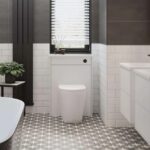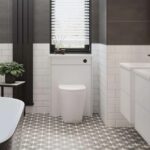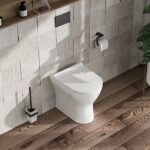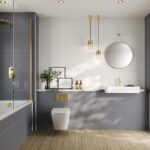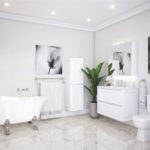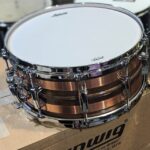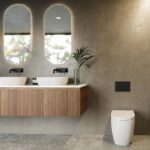Whether renovating your bathroom or building it from scratch, your choice of toilet is essential for its look and functionality. Ease of cleaning and user comfort further make it a vital factor. However, the numerous options available make deciding on the correct one challenging and settling on an innovative solution such as a back-to-wall toilet can make the process much easier. Here’s what you need to know about this toilet type and how to choose the right option.
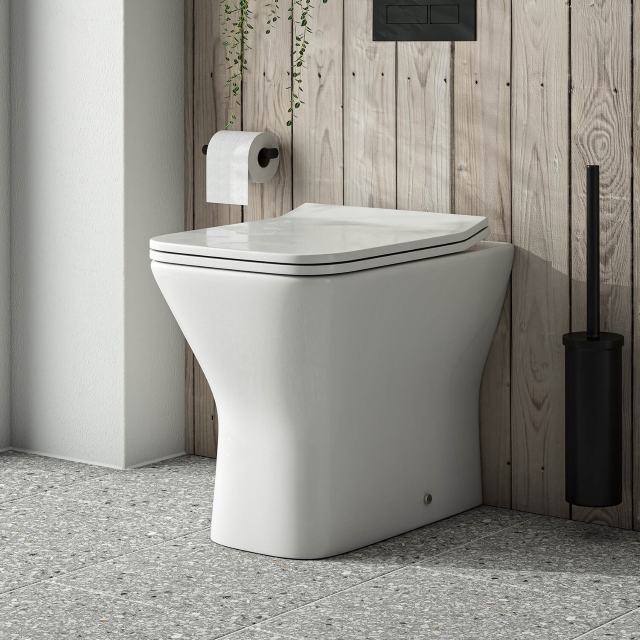
What Is a Back-to-wall Toilet?
On a close-coupled toilet, the conventional type we are most accustomed to, the toilet itself is positioned in front of the cistern, which is the tank that holds the water needed to flush. The cistern is fixed to the wall behind the toilet.
On the other hand, back-to-wall toilets do exactly what their name suggests—that is, they back the wall. The cistern is located inside the wall, behind an access panel, and the rear is fastened to the wall directly. Its concealed plumbing and hidden cistern provide a flawless finish for a sleek and streamlined look to your bathroom. The ability of a rimless and easy-to-clean back to wall toilet to save space makes it a great addition to smaller bathrooms and en suites and adds aesthetic appeal.
Although stud walls make it easier to conceal the cistern in the wall, a back-to-wall toilet against a solid wall is still an option. In this situation, you only have to mount a cistern furniture unit to the wall to hold the cistern and then mount the toilet in front of it. In contrast to wall-mounted models, back-to-wall toilets are floor-mounted.
Are Back-to-Wall Toilets a Good Idea?
Like many other things in life, back to wall toilet varieties have advantages and disadvantages. They’re popular because they give off a more streamlined, modern appearance by concealing the cistern and plumbing inside the wall. In comparison to a close-coupled toilet, a back-to-wall toilet will also save room if the cistern is inside the wall. You can even go for a compact model to conserve even more room in a small bathroom. Back-to-wall toilets are also simpler to clean because all the plumbing is concealed. Additionally, it’s significantly quieter when flushing.
Installation is one of the cons, as it can be more difficult than installing regular toilets. Because the soil pipe and all the moving parts are located behind the stud wall (or in the furniture unit), they may be more difficult to maintain and repair. When installing a concealed cistern in a wall, it must be behind a detachable panel that can be removed for maintenance.
However, plumbers are getting more and more accustomed to these new designs, so repairs shouldn’t be an issue as long as you install the wall panel and cistern carefully to allow for flexibility.
What to Consider When Shopping for One?
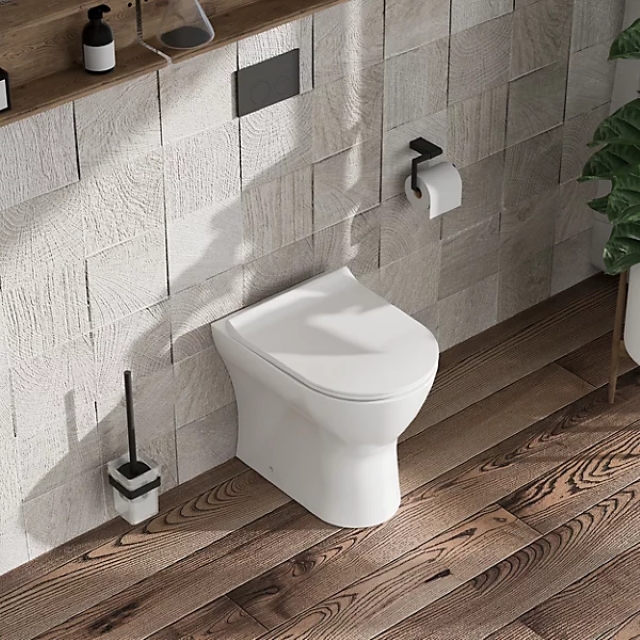
Once you decide a back-to-wall toilet is the right option for your bathroom, you must consider several factors to choose correctly.
Style
Although back-to-wall toilets are often associated with a more modern bathroom design, there are options for individuals who like a little more history.
The majority of modern versions include angular or curved forms. While angular versions are preferred for a stylish appearance, curved ones work well in family bathrooms. Think of short-projection back-to-wall toilets for small bathrooms. Their streamlined form maximises available space without sacrificing aesthetics.
Seat
Many toilets come with seats made specifically for the model of the toilet. To enhance the comfort and usefulness of the toilet, you can buy an alternative seat. While some toilet seats have a built-in bidet, others will include a warming feature. Basic models are available in a range of colours and sizes. Before buying a toilet seat, ensure to measure the new toilet.
Flush Mechanism
To force the contents of the bowl into the drain, most toilets use gravity to flush the water from the tank into the bowl. Because of this flushing mechanism, these toilets are known as gravity-flush. Dual-flush, on the other hand, have the same gravity-flush mechanism but offer the user the option of a vigorous or low-flow flush.
Some varieties are made to flush harder to guarantee that the contents of the bowl are flushed down the drain. Generally speaking, these toilets are known as pressure-assisted. The bowl employs air pressure to improve the flushing power, which makes this extra force possible.
Water Use
Old toilets use large amounts of water for flushing, consuming roughly 22 litres per flush. Due to current water-saving regulations, new toilets consume as little as 3 litres per flush. In addition to minimising water waste and supporting further conservation initiatives, this also results in the house using less water overall, which lowers water bills.
Height
Generally speaking, toilets come in two heights: chair and regular height. Comfort height is another term for chair height, depending on the source and brand. Consider a standard-height bowl for a children’s bathroom or if most household members are smaller, but choose a chair-height bowl if most users are taller or have mobility issues.
Bowl Shape
You should also consider the bowl’s shape when looking for a new back-to-wall toilet. Based on the users’ sizes and the available space in the bathroom, evaluate if a round or elongated bowl is preferable. Even while an elongated bowl makes using it more pleasant, a tiny bathroom might not be able to accommodate the extra size. Choose a round bowl for small powder rooms, guest bathrooms, basement bathrooms, or children’s restrooms.

